Arum pictum, Arcipelago di La Maddalena, Sardegna
Photograph by Fabio Presutti
Fall bloomers always catch my attention – not only do they provide interest and color when a lot of other plants are still just waking up from summer-dry semi (or total) dormancy, but they also celebrate what I consider to be the ‘start’ of the natural year in mediterranean climates – when the rainy season begins!
Arum pictum, the subject of this article, is the only fall blooming in its genus. In the original version of this article, published in September 2010, I mentioned that I was interested in growing this species myself, but was having trouble locating it in the trade. I eventually came into contact with CJ Addington, and to my delight, he eventually sent me some tubers from his own planting which was growing happily in his garden near Sacramento (in California’s Central Valley).
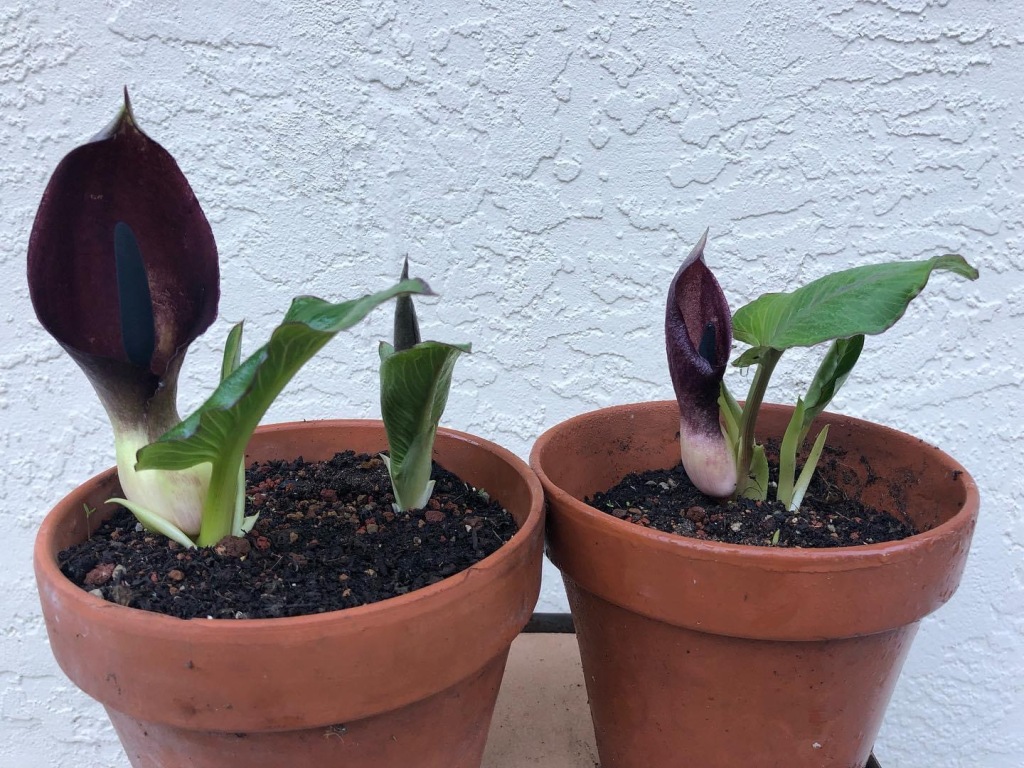
I have been growing Arum species for many years and I liked the idea of a fall blooming species with the flowers opening at the same time that the foliage is fresh (other spring bloomers flower when the foliage is looking tired or already starting to go dormant). That the range species is entirely in the Mediterranean which aligns with my interests in understanding how plants adapt to the mediterranean climate.
Here is what Peter Boyce, the well-known authority of The Genus Arum, has to say about this species:
“The leaves of A. pictum display a variety of colours, depending on the stage of development reached. On first emerging they are a deep, shiny, metallic green, with the margins . . . tinged with purple. As the leaf expands the purple . . . coloration fades while the main and lateral veins become slightly paler; the margin however retains its coloration. As the season progresses . . . the veins continue to lighten until late spring, when they stand out as a creamy-white to silvery-grey network. The late season coloration of A. pictum leaves is similar to the silver-grey veining of many forms of A. italicum, although the leaf shape is very different. In view of this similarity it is hardly surprising that these two plants have been much confused in the past. In addition to its attractive foliage, A. pictum produces spathes at the start of the growth period in the autumn, a flowering pattern which is unique to this species.
“Arum pictum was first described by Linnaeus the younger from material gathered on Corsica, where it occurs in stony or rocky places or beneath low scrub.”
Note:
As Peter Boyce mentions above, the plant being discussed here is NOT Arum italicum ‘Pictum’, a form of a different species that also has marking on its leaves. Older references often show that plant as A. pictum. If you search “Arum pictum” on Google you will see this plant in the search results as well as the true species, making it cumbersome to find correct information and potential suppliers.
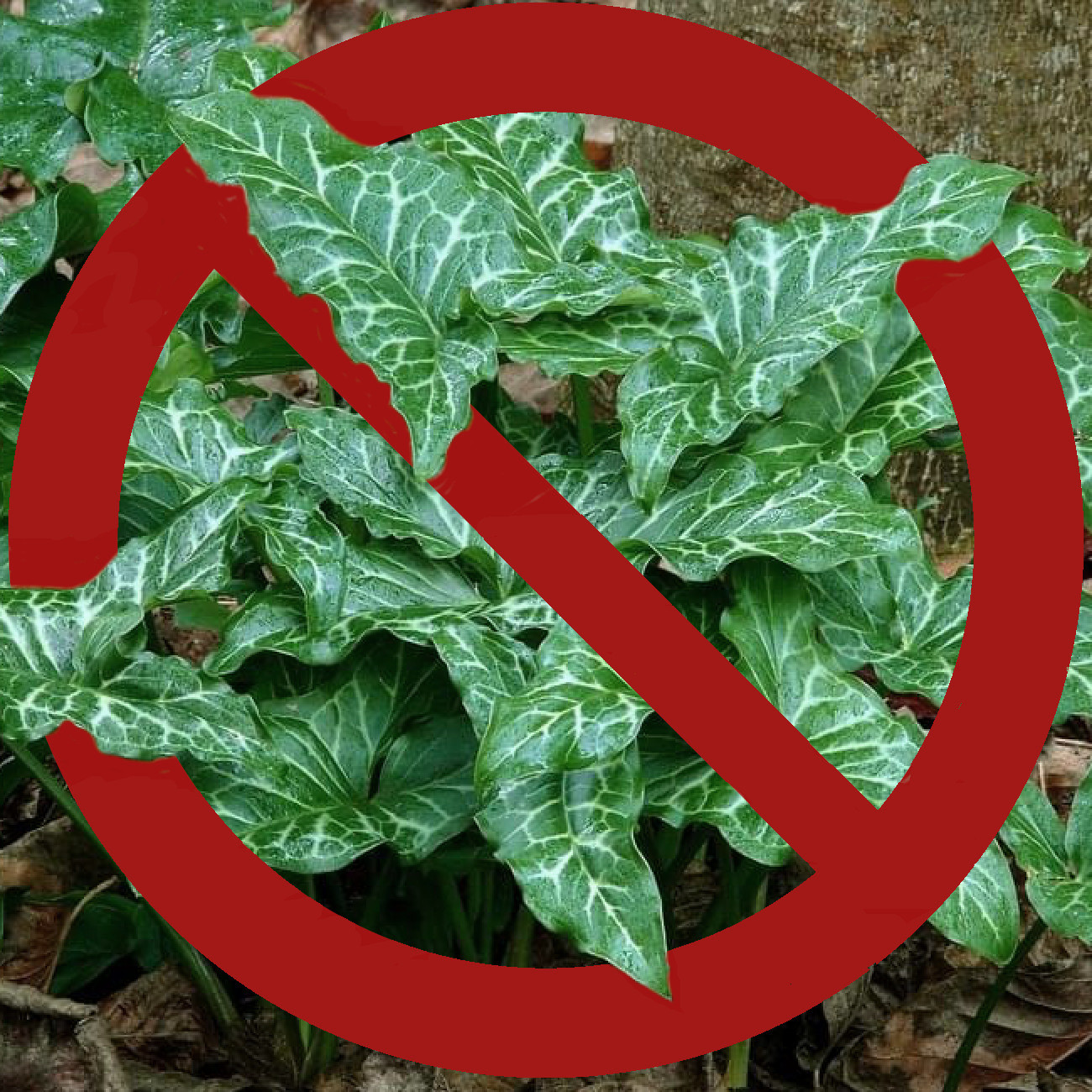
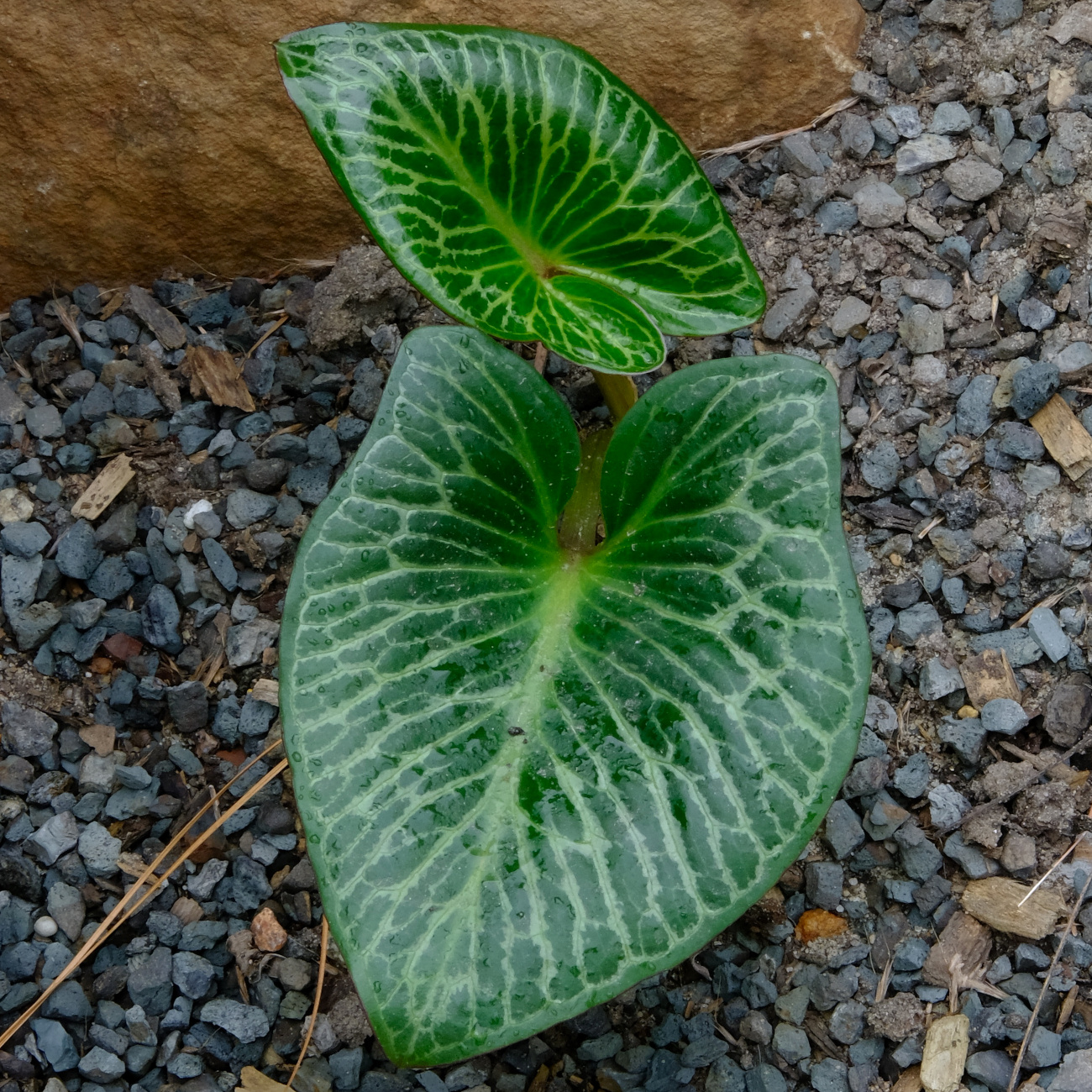
Arum pictum at right
Growing my newly received Arum was easy. They arrived at the end of our summer as dormant corms. I potted them up immediately and waited for them to awaken and start growing. A few weeks later, with cooling weather and some rain, green shoots emerged. These unfurled into some very handsome small leaves (no flowers, unfortunately) which gradually gave way to larger and larger leaves.
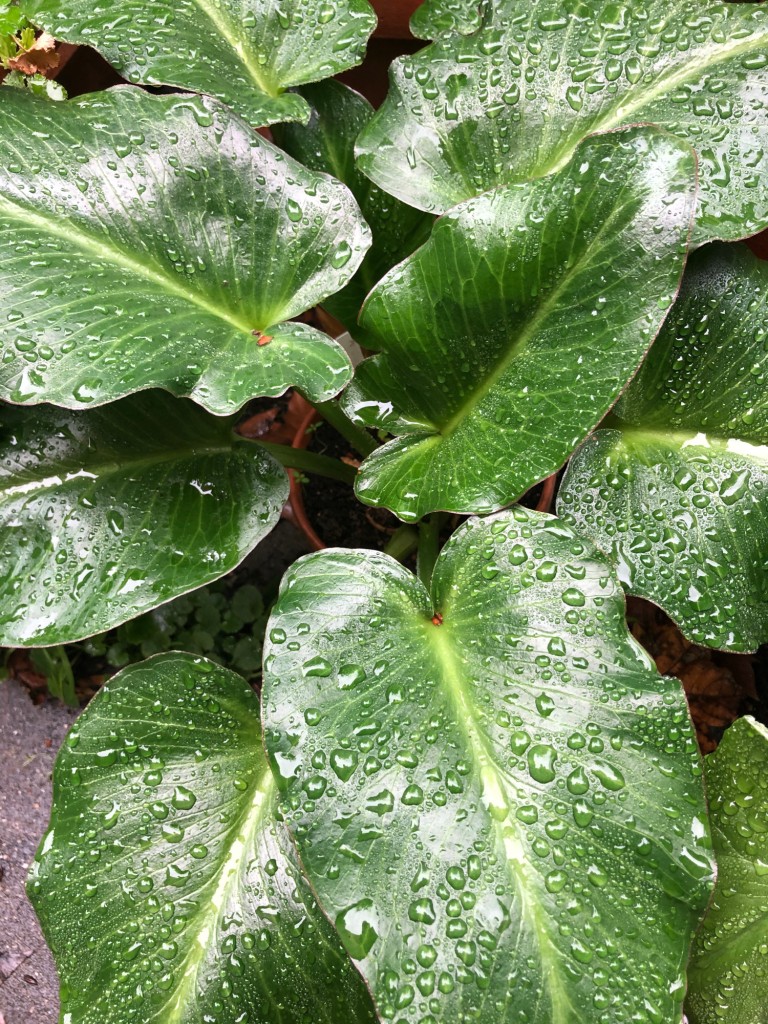
My plants do not show the intense silvery veins that are seen in some forms, but they are still quite handsome. Getting to know this plant better I’ve discovered a group of international plant collectors growing this species. Since Arum pictum occurs in isolation on various western Mediterranean islands, a number of different forms seem to be in the process of diversifying further from each other. Enthusiasts often collect and trade various forms with each other, bypassing the trade. There are some leaf shapes that are more ‘saggitate’ or even lobed as well.
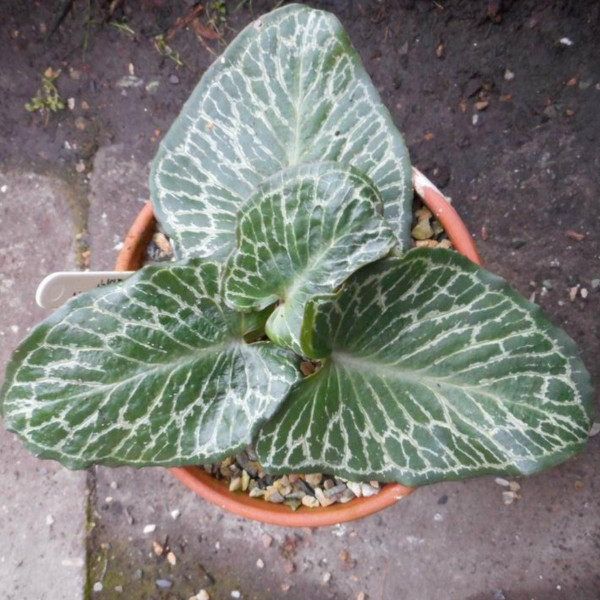
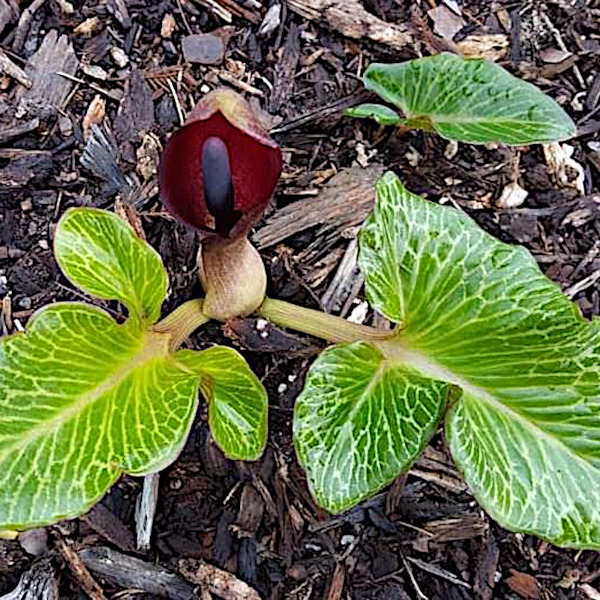
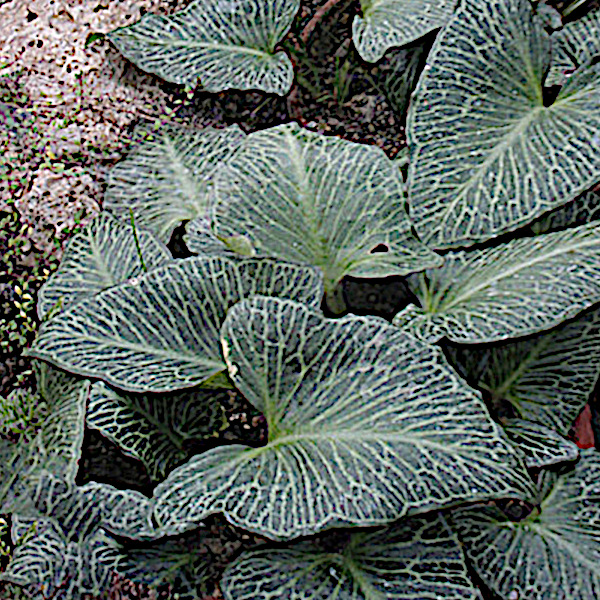
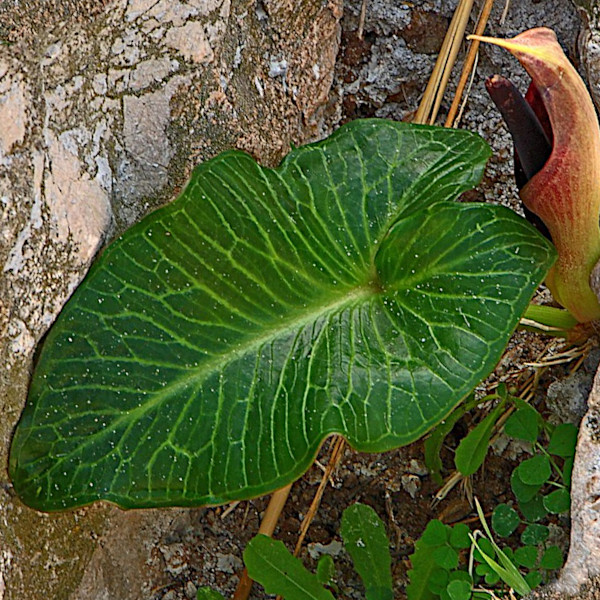
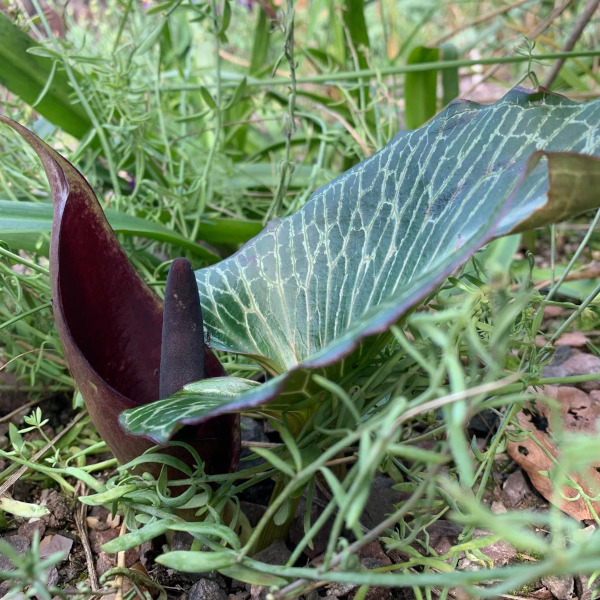
The leaves are not the only variation – flower color can also be diverse. In Arums, the ‘flower’ is made up of a modified leaf called a ‘spathe’, which is wrapped around a flower spike called a ‘spadix’, the base of which contains male and female flowers. Sometimes the dark red spathe is lighter, or even shaded from pale to deep burgundy. ‘White-spathed’ forms are not uncommon (usually more of a pale green) and some of those forms also have a pale spadix as well.
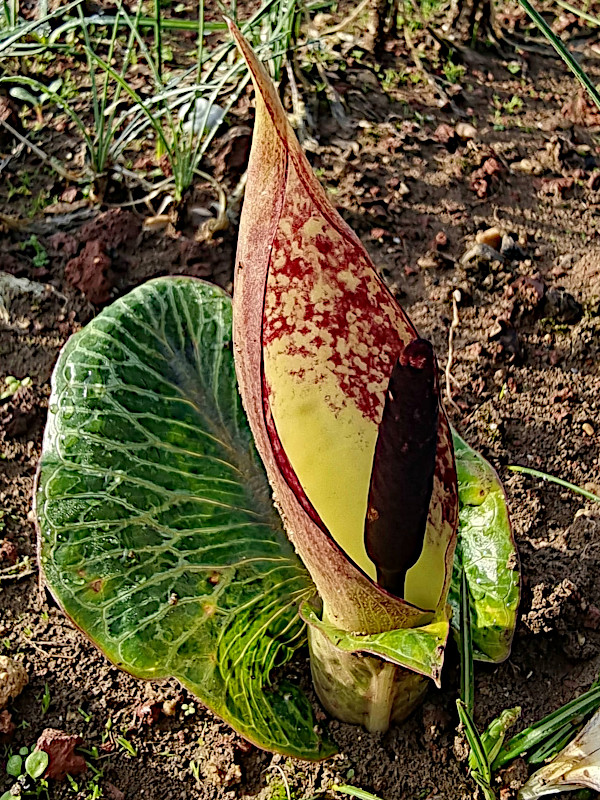
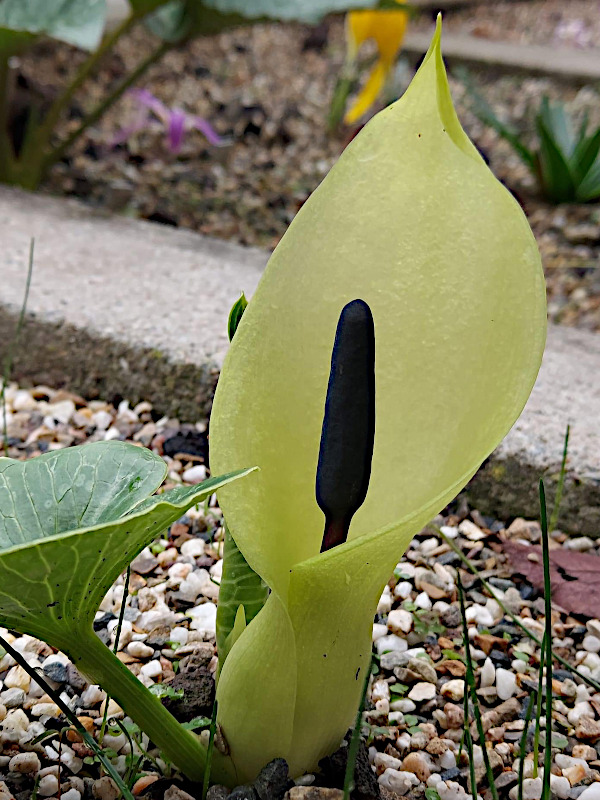
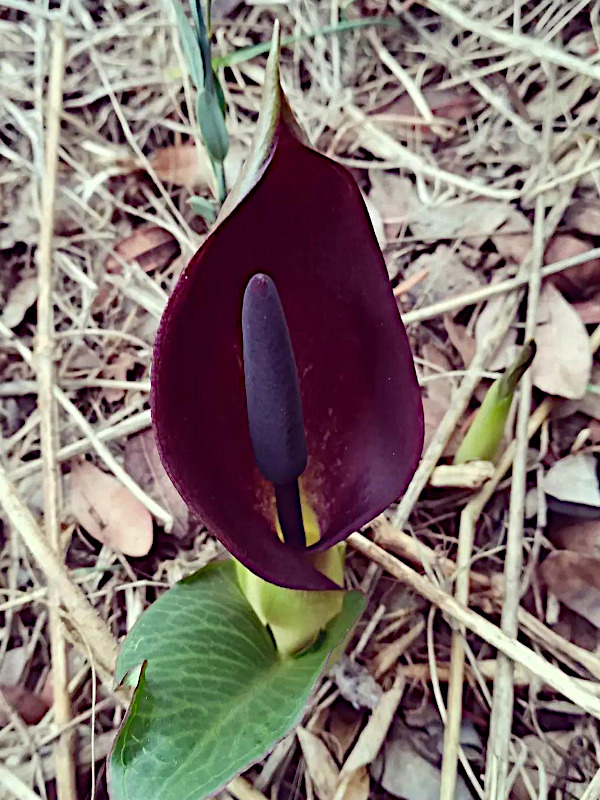
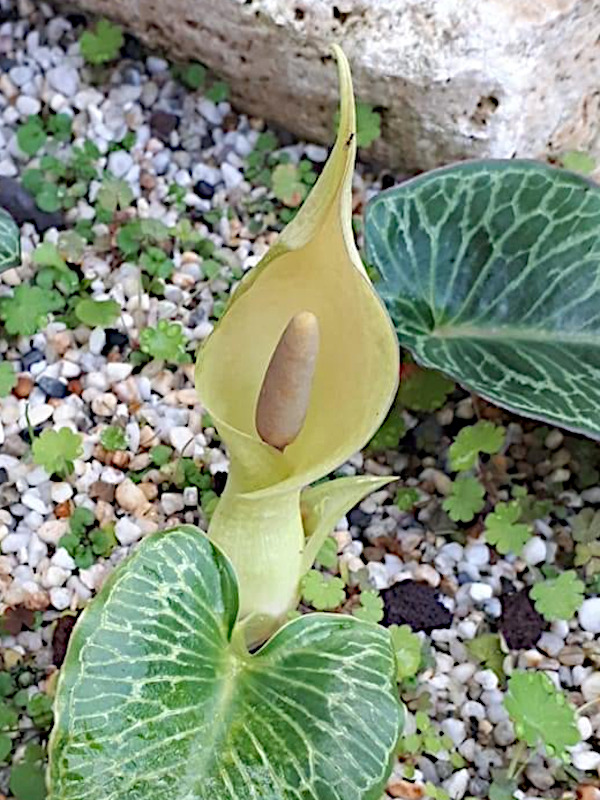
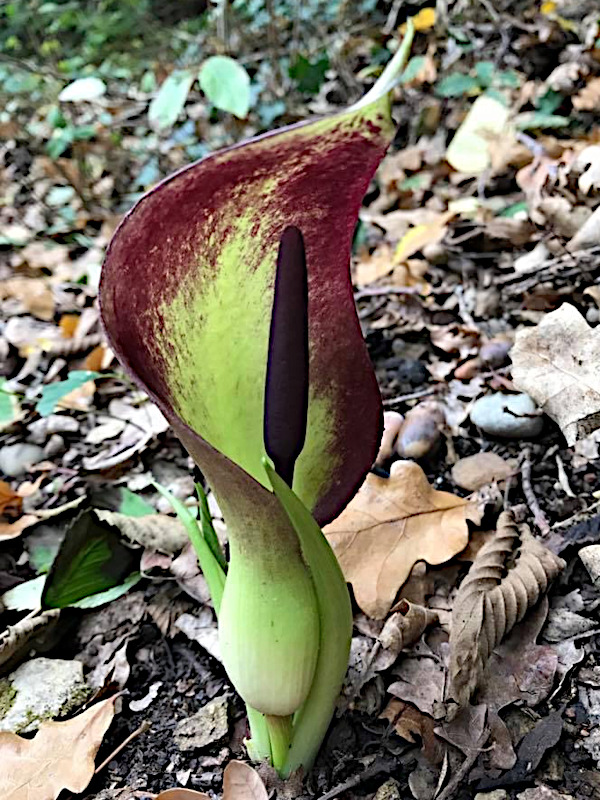
Like many members of the Aroid family, the flower gives off a carrion-like scent to attract flies and other insects which enjoy such fare. In the open air, this odor is difficult to detect unless you get your nose right down into the flower. If the plant is in a greenhouse or other enclosed space, your can more fully ‘appreciate’ the smell!.
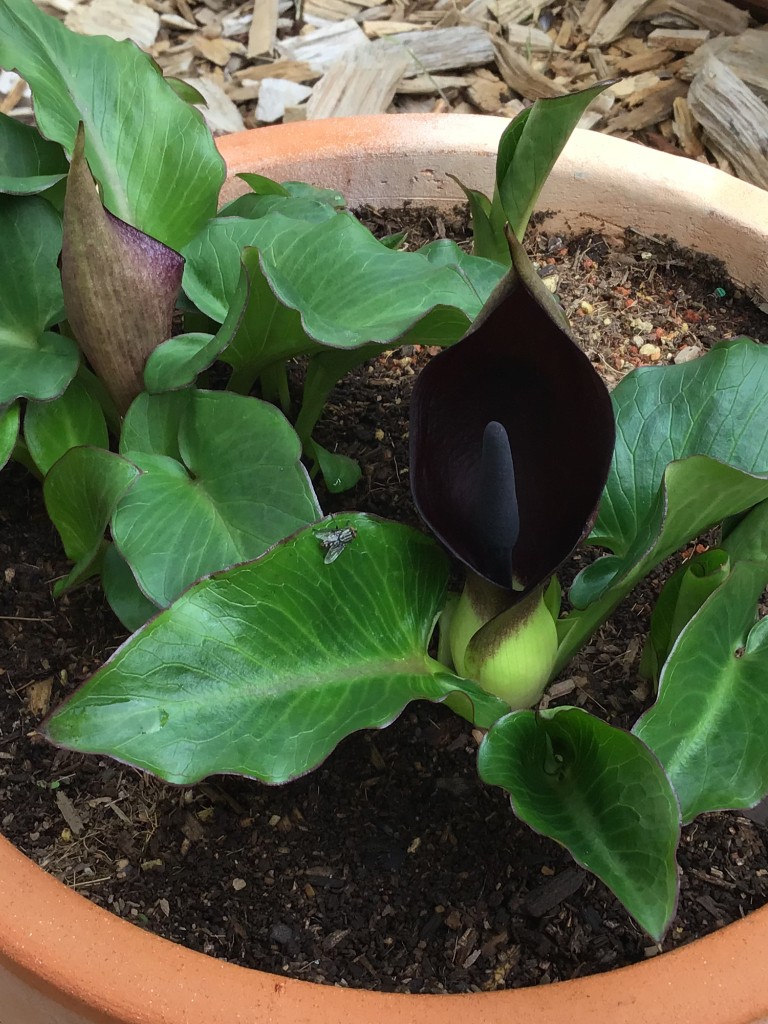
Much of the cultural information you might find on the Internet seems to be from northern European sources, so they discuss protection from cold, drainage, etc. While this species does seem to favor sites with good drainage, it is easily grown in reasonably drained soil in the summer-dry mediterranean climates.
A Brief Botany Break
This species is unique from other Arums in various ways, and was once actually placed by itself in a different genus – Gymnomesium. Currently this species is placed within Arum but genetic testing places it apart from other species – the Phelogenic chart here shows it as ‘basal’ (red shading) to other species (shaded green). It is unclear if this means the others evolved from A. pictum or if it has just gone in a different direction. An interesting avenue for future research.

Arum pictum – L.f., Suppl. Pl. 410 (1782)
AH-rum PICK-tum (pronunciation info)
Distribution
Rocky places in the Balearics (Mallorca), Corsica, Sardinia, and the Tuscan archipelago (Italy)
Synonyms
Arisarum pictum – Raf., Fl. Tellur. 3: 63 (1837)
Arum balearicum – Buc’hoz, Hist. Univ. Règne Vég. 8: 11 (1775)
Arum corsicum – Loisel., Fl. Gall. 2: 617 (1807)
Arum pictum subsp. sagittifolium – Rosselló & L.Sáez, Acta Bot. Barcinon. 44: 170 (1997)
Gymnomesium pictum – Schott, Oesterr. Bot. Wochenbl. 5: 17 (1855)
Potential Problems
Other than poor soil drainage and cold, there seem to be few issues with the culture of this interesting plant. As will all Arums as well as other Aroids, the sap of A. pictum contains needle-shaped crystals of calcium oxalate, called raphides. Handling of sliced or damaged corms can cause extremely painful skin irritation, but the plant poses no threat otherwise.
References and Links
(* Information retrieval date for the URL mentioned)
Boyce, P.C. (1993). The Genus Arum. HMSO, London: 170 [Google books]
Boyce, P.C. (1988). Arum pictum. Curtis’s Bot. Mag. 5(2): 72-76, Pl. 102. [www.aroid.org]
ARUM. (n.d.). Pacific Bulb Society.
https://www.pacificbulbsociety.org/pbswiki/index.php/arum (*January 2023)
Boens, W. (2021). The fetid and the beautiful, Arum pictum. International Rock Gardener, 133, 2-18. https://www.srgc.org.uk/logs/logdir/2021Jan281611871267IRG133.pdf (*May 2021)
Learn about Arum pictum. (n.d.). Plant Delights Nursery.
https://www.plantdelights.com/products/arum-pictum (*September 2020)
Arum pictum. (n.d.). Tropical Britain.
https://www.tropicalbritain.co.uk/arum-pictum.html (*March 2020)
Arum pictum. (n.d.). Alpine Garden Society.
https://www.alpinegardensociety.net/plants/arum-pictum/ (*February 2020)

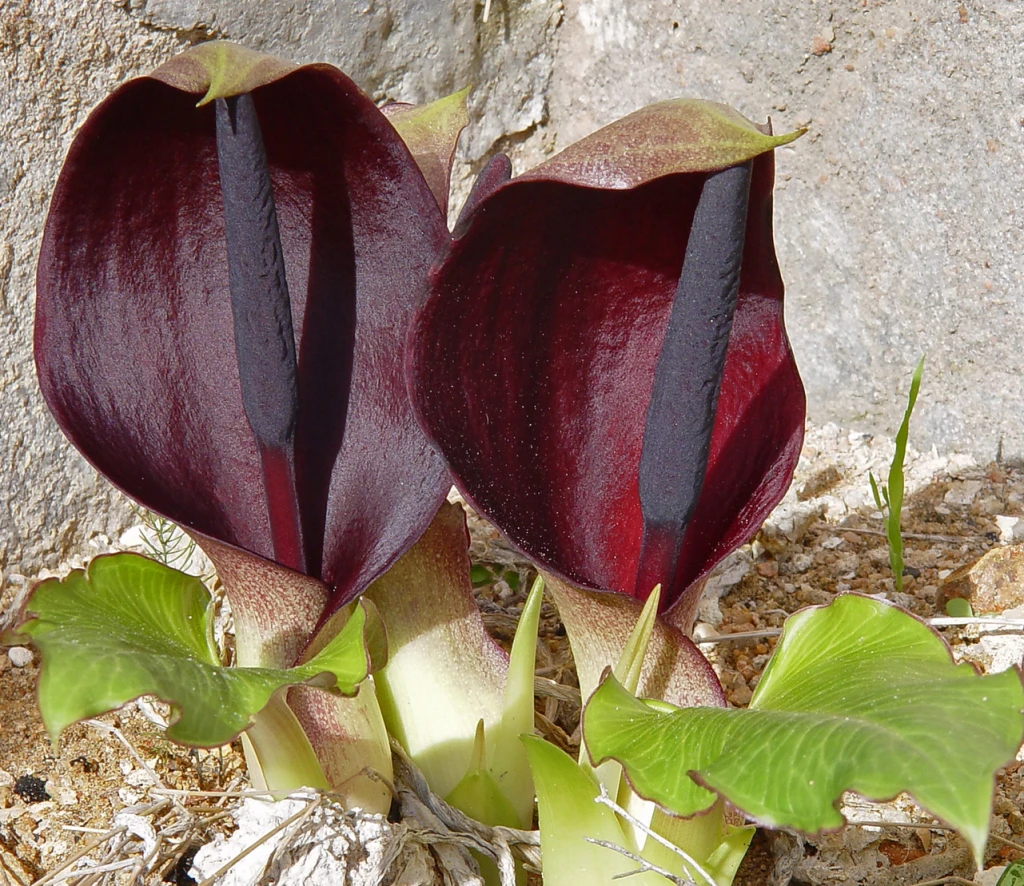
Leave a comment